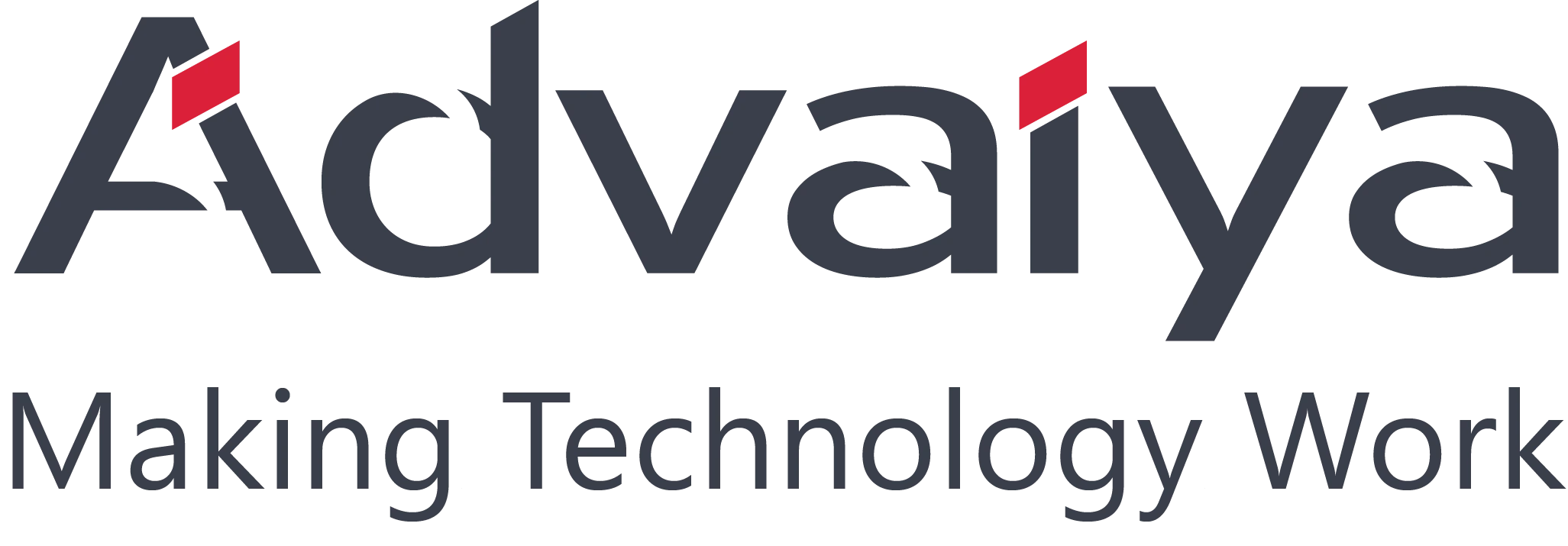Within an organization, project requests can originate from anywhere. The absence of demand management process makes it chaotic and difficult to figure out as to what is being worked on and by whom. Establishing a right process to centralize all demand requests, use of standardized templates and governance processes help streamline the process for consolidating data collection and providing the appropriate amount of flexibility and autonomy for individual business units.
Demand management as a concept in Microsoft Project Online integrates project proposals, portfolio analysis, and project management through workflows and project detail pages. It captures all work proposals at one place, guides the proposals through a multistage governance process, helps decision-makers make decisions about which proposal to approve, and track progress on project execution until the work is completed.
Microsoft Project Online can serve as an effective demand management tool for your organization by capturing demand as potential projects directly into Project Server or via a SharePoint list that is connected to Project Server. 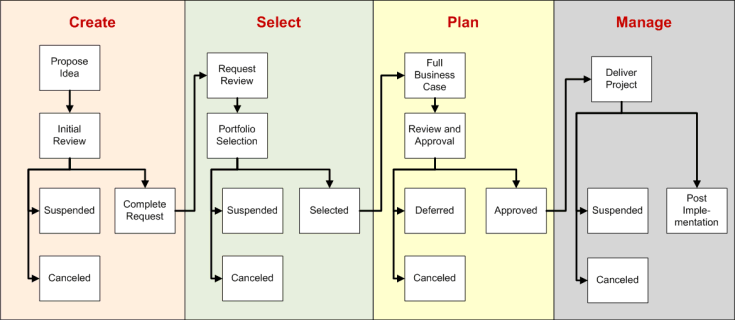
The above figure shows the four phases of demand management, and how they are interlinked. Within each phase, there are various stages, and each stage can be associated with a Project details Page (PDP) in Project Web App and linked as a workflow to Enterprise project template (EPT) in Project Online.
Let’s understand the demand management concept through a simple example: –
Consider yourself as a program or project manager for ABC organization who is using Microsoft Project Online for managing projects and proposals. Now per recent management decision, you are asked to collect proposals and requests, as well as project ideas from different people in your team or even across the organization at a centralized space.
A simple way to do that would be to collect these through email requests or one to one conversation, and then you consolidate them and manually enter in Project Web App (PWA) one by one. The problem with this is that it’s pretty time consuming, and not easily scalable for a continuous and seamless agile process. Plus, the proposals could be submitted in different formats, which creates a further overhead of converting them to projects in Project Web App (PWA).
READ MORE ARTICLES
PROJECT SERVER 2007 END OF LIFE – MIGRATION OPTIONS TO CONSIDER
PLAN & MANAGE WITH ADVALUE – THE ULTIMATE ADD-ON FOR PROJECT SERVER/PROJECT ONLINE
It would be great to have a mechanism of having everyone enter their requests and ideas into Project Web App (PWA) directly through a SharePoint list tailored per organizational needs (using specific list items to capture the request), and then you could convert a subset of those list items to projects?
Just start by creating a custom SharePoint list within your Project Online environment with criteria that matchProject Custom fields Ensure that this list captures the minimal information you require to manage demands.

In the example above there are two requests entered as: New Windows Phone App and New Windows 8 App
Custom SharePoint list items with columns such as Description, Submitter, Budget Cost, Budget Estimate, Risk, and Rating) can be created to capture the demand requests.
All the List items, or ideas listed can be easily “promoted” to Projects by clicking on Create Project button as available inside the list items control, which brings up the “Create Projects in Project Web App” dialog which lists the data captured in the Ideas & Requests list and intelligently maps to equivalent PWA custom fields automatically.
For instance: Budget Cost maps to Total Cost, or the Risk choice list maps to Risk Rating. Note that, you can always set the default mappings, by navigating to the SharePoint list settings, and choosing Project Server settings options.

Once all mappings are done and you are ready to proceed to choosing the process that would be used to evaluate and execute the request. In Project Sever and Project Online, there’s a concept of Enterprise Project Type (EPT) that allows diverse projects to be driven by different workflows and in this new scenario we will choose the New Product Development EPT.

Now post process selection, move to the command “Create Projects” which will then convert the SharePoint list items as selected as projects in PWA. You will be notified that the projects have been successfully created in PWA:
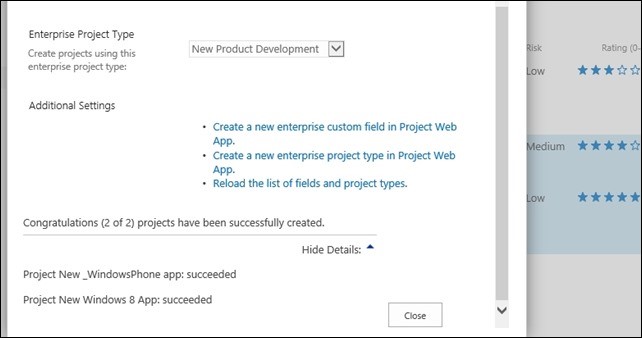
Now navigate to PWA’s Project Center and you can now see your new projects listed there.
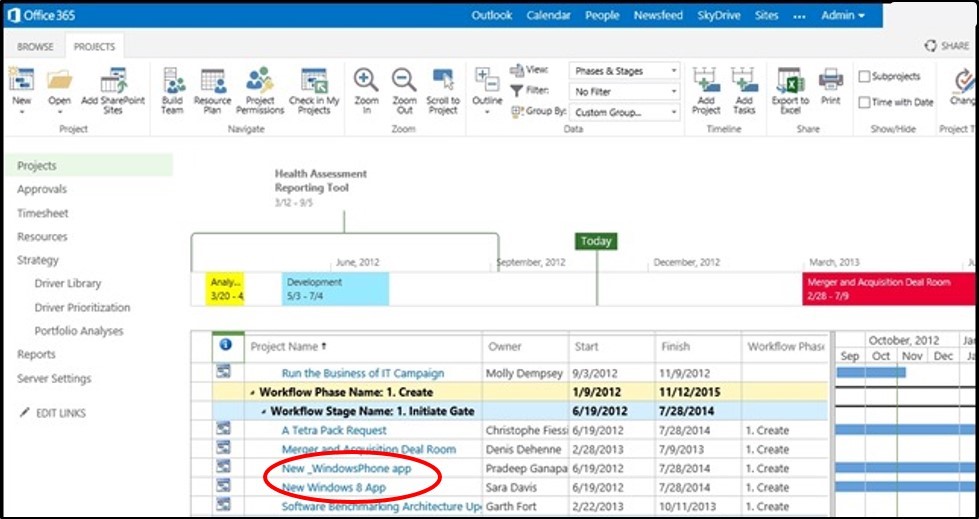
Let’s select the New Windows 8 App project and you will notice there are five phases in the workflow specific to New Product Development EPTs associated.

All the information captured in the list item is also transferred to the project’s custom fields as shown below:
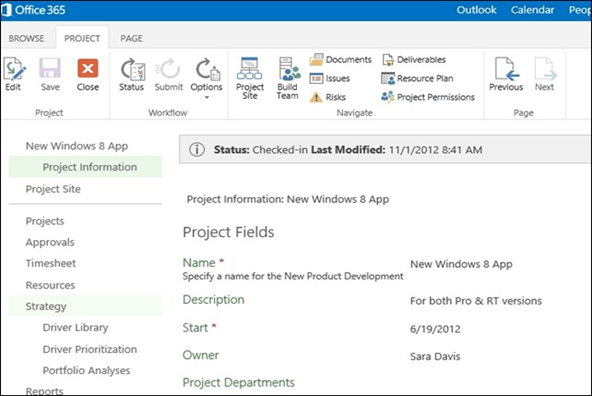
Microsoft Project simplifies overall project management by providing an evaluation phase through out of the box portfolio analysis capabilities of PWA before the execution phase. It’s an end to end process without any customization or a single line of code required!
PROJECT STATUS REPORTING TOOL
Keep things up-to-date and focus on your project's success
